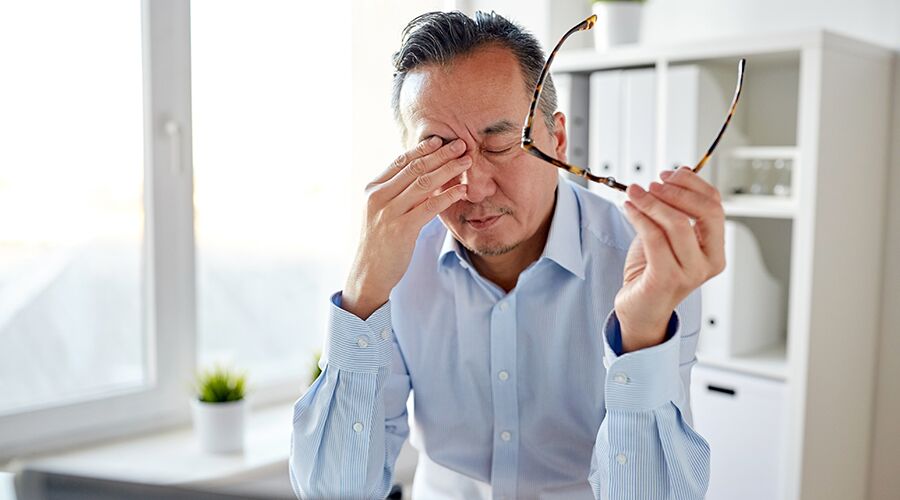Prostatitis is a benign but painful condition that causes inflammation of the prostate or surrounding area. While half of all men will experience it, many don’t know what it is.
When prostatitis happens to younger men, it can be alarming and a little scary.
We asked UNC Medical Center urologist Eric Wallen, MD, to explain prostatitis and what can be done to fix it.
What Is Prostatitis?
Prostatitis is a spectrum of diseases that typically involves a painful swelling of the prostate.
There are three main types of prostatitis.
There’s the severe kind, which Dr. Wallen says is a “rip-roaring infection with pus.” This is a serious condition associated with a high fever. The discomfort is usually so severe that you feel like you need to go to the emergency room.
There’s the less severe chronic bacterial prostatitis, a low-level smoldering infection caused by bacteria. This persistent form can be treated with antibiotics, but it may recur.
But the most common type of prostatitis is the least severe. It’s what Dr. Wallen refers to as a “kind of tension headache of the groin.”
For this less severe and more common type, you may feel like you need to see a doctor eventually, but you’re probably not feeling awful enough to go to the emergency room.
Symptoms of Prostatitis
Prostatitis is a “constellation of symptoms,” Dr. Wallen says.
It’s not as simple as saying, “Hey, doc, my prostate hurts,” because most men are not usually aware of their prostates in any specific, sensory way. It is usually felt to be a vague pain in the groin region.
Instead, patients report the following symptoms:
- Pain when sitting, especially for long periods (including while driving and doing desk work)
- Sensation of sitting on a golf ball
- Pain between the scrotum and anus, which is the area called the perineum
- Pain in the penis generally, or during urination
- Pain in one testicle, both or alternating
- Groin pain in the pubic area
- Rectal pain
As these symptoms suggest, prostatitis can involve other organs near the prostate as time progresses. The prostate is the origin of the disease, but nerves, muscles and fascia covering the muscles around the prostate also become inflamed over time and can remain painful.
Testing for Prostatitis
The first step in testing for prostatitis is to determine whether the pain is being caused by inflammation only or an infection. This is done with a simple urine test.
“After a prostate exam, which is a rectal exam, we will collect urine, and sometimes the infection will be noticeable only after we’ve pushed on the prostate a little bit and expelled some of the bacteria from the prostate into the urethra, which is then collected as a urine specimen as well,” Dr. Wallen says.
Treatment for Prostatitis
It’s easier to treat prostatitis involving an infection. An infection can be treated with antibiotics, but chronic inflammation can be hard to control and understand.
When there is no infection, an anti-inflammatory such as over-the-counter ibuprofen or naproxen can treat the pain.
However, many men—particularly as they get into middle age and older—have urinary issues as a manifestation of the prostatitis problem.
The prostate sits at the base of the bladder and surrounds the urethra, almost like a doughnut. With swelling, urination can become more difficult because the channel is narrowed. In this case, Dr. Wallen prescribes medications that help ease urinary symptoms.
For other men, one of the indicators of prostatitis is erectile dysfunction. Dr. Wallen prescribes these men with anti-inflammatories and some of the medications available for erectile dysfunction, such as Viagra or Cialis.
Some physical therapists treat nonbacterial prostatitis with techniques to release the muscle, such as dry needling and massage.
How to Prevent Flare-Ups of Prostatitis
Prostatitis can be caused by muscular tightness, which can be an indicator of stress, so Dr. Wallen usually talks to his patients about stress in their lives.
“A lot of the guys I see tend to be type A’s, high-stress-type guys who work in high-stress environments, and if I can get them to address that, a lot of times their prostatitis symptoms will actually improve,” Dr. Wallen says. “I talk to them about stress directly, and it’s probably the first time any physician has had that conversation with them.”
Dr. Wallen recommends yoga to these patients, and it has been “a game-changer” for many of them. He also recommends short-term relaxation exercises, such as getting in a hot tub or taking a warm bath.
What to Do If You Suspect Prostatitis
Start with a self-examination. Ask yourself about stress in your life and think through ways you can easily decrease your stress.
Try over-the-counter anti-inflammatories and see if they help. If that doesn’t solve the problem, talk to your doctor. Worrying about having a serious condition could worsen your symptoms.
Think you have prostatitis? Talk to your doctor. If you do not have a doctor, find one near you.
